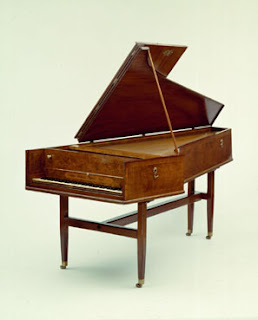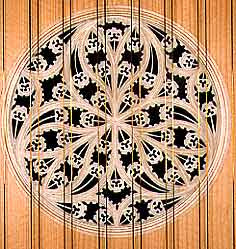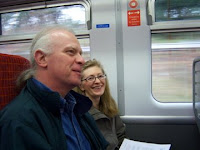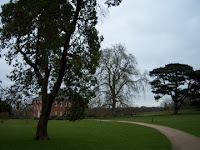
Instruments have long been used as forms of artwork. In Europe, keyboards were very similar to ornate pieces of furniture, with lavish paintings and embellishments both outside and inside their cases. Styles of decoration varied from country to country due to changes in taste and fashion.
Italy
Italian keyboard instruments tended to be very plain; the instrument itself would typically be of unpainted cypress wood. The cases for the keyboards (as these instruments were often small enough and portable and thus needed a case to be held in) were little more decorated; sometimes they would be covered in plain leather, or more rarely, cloth; occasionally they were painted a solid colour.
Low Countries
Keyboards from the Netherlands were far more ornate than their Italian counterparts. They tended to be painted both inside and out. Ruckers instruments were decorated in a very specific way; they would be lined with white paper, which was then embossed with black ink. (Today, the paper appears yellow and the ink green from age.) The soundboards typically featured images of flowers, tulips, birds, and prawns.

England
English keyboards are in a class of their own. It is rare to find a painted harpsichord or clavichord; rather, the decoration of instruments in this country is in the selection of woods and the use of marquetry (wood inlay). Typical woods chosen for these instruments are oak, maple, sandlewood, and walnut.
France
Instruments from France were very lavishly decorated in the 1700s. They featured paintings both underneath the lid of the instrument, as well as in panels along the sides. They were also be painted in either a solid colour or a marbled pattern. Their soundboards featured flowers, birds, and fruit.
Germany
German instruments began very crudely; in the 1600s, it was rare to find any keyboard instruments with any sort of decoration, but the few that did would have a single painting on the inside, typically of a mythological or biblical scene. In the 1700s, instruments began to be painted (solid, marbled, or tortoiseshell patterns), and featured paintings of better quality with the same subjects as previously, though Chinese scenes were popular as well.
Roses
One feature that is common among all of these instruments is the Rose. It is typically found on the soundboard of the instrument, and is a way for the manufacturer of the instrument to both sign his name and sometimes date the instrument as well. Roses were constructed out of either cypress and paper, leather, or metal.

Links of interest:
Denzil Wraight, Italian Harpsichords
National Music Museum
Edinburgh University Collection of Historical Musical Instruments
National Music Museum
Edinburgh University Collection of Historical Musical Instruments
Information provided by Bryn






 The Clavioline was the first electronic keyboard available for mass production. Developed in 1947 by Constant Martin in Versailles, France, this versatile keyboard had success in the early 1950’s in the UK under the Selmer Company. Originally designed to be bolted under a piano and imitate a variety of instruments found in an orchestra, the Clavioline soon became popular as its own unique instrument. It has been used on a variety of hit songs, from the Tornados’ “Telstar” released in 1962 (the first UK song to hit #1 on US charts) to “Baby, You’re a Rich Man” by the Beatles, included on their “Yellow Submarine” album.
The Clavioline was the first electronic keyboard available for mass production. Developed in 1947 by Constant Martin in Versailles, France, this versatile keyboard had success in the early 1950’s in the UK under the Selmer Company. Originally designed to be bolted under a piano and imitate a variety of instruments found in an orchestra, the Clavioline soon became popular as its own unique instrument. It has been used on a variety of hit songs, from the Tornados’ “Telstar” released in 1962 (the first UK song to hit #1 on US charts) to “Baby, You’re a Rich Man” by the Beatles, included on their “Yellow Submarine” album.










 The house
The house